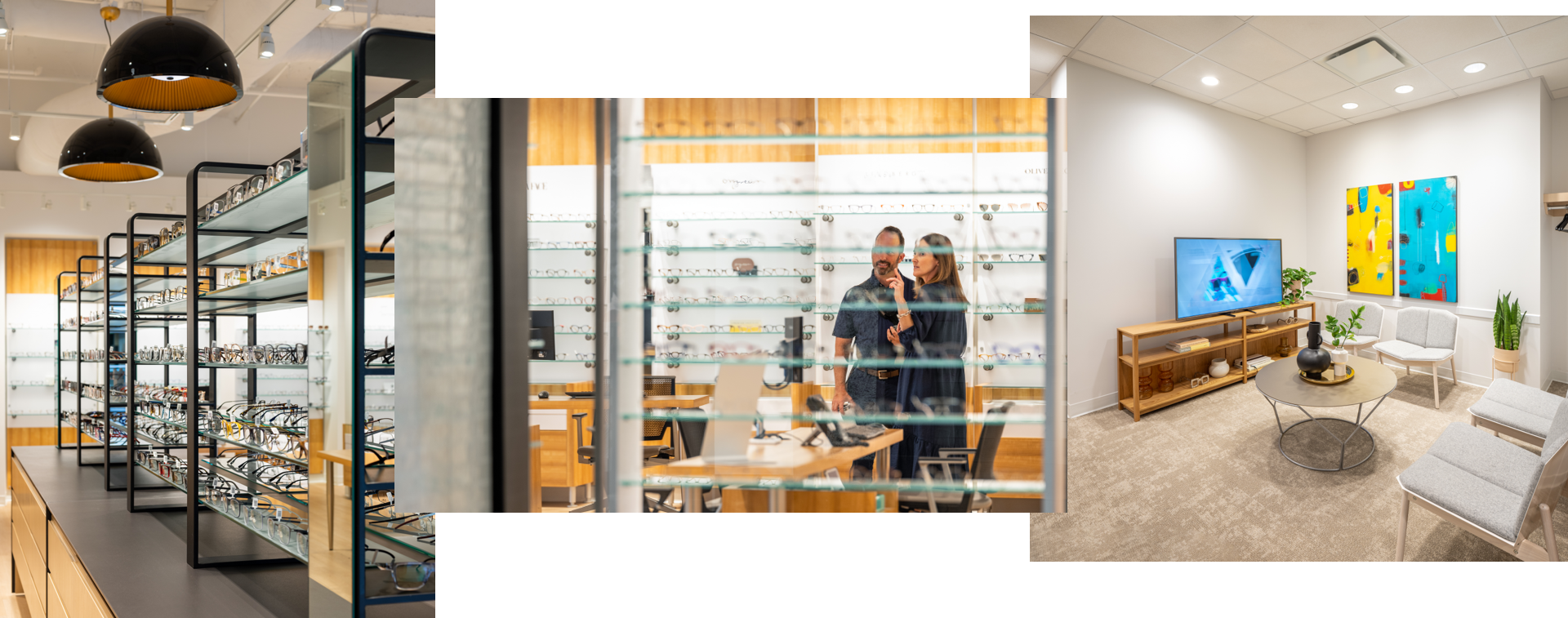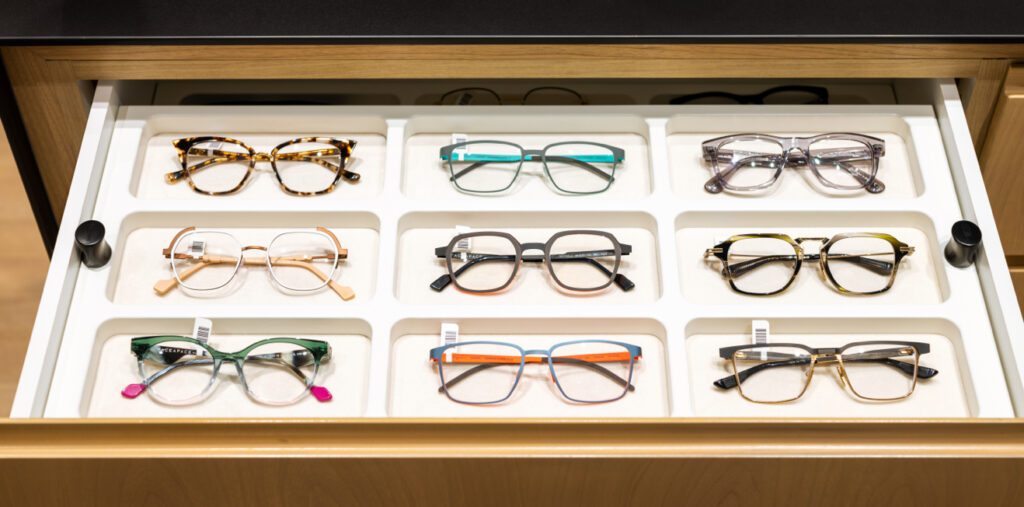If you’ve ever felt a burning or stinging sensation in your eyes while going about daily tasks, you may have experienced dry eye disease. It’s one of the most common eye conditions and can affect nearly anyone.
So, what can you do? The first step to any treatment is uncovering the cause. A dry eye exam allows us to take in the full scope of your symptoms and determine the source and an effective treatment to get you seeing comfortably again.
What is Dry Eye Disease?
How often do you truly think about your tears? Probably only when they’re causing you trouble. However, your tears do more than show your emotions. Every time you blink, you create a tear film over your eyes, which helps to hydrate and nourish them. This tear film is made up of 3 layers.
The outermost layer is the oily layer. It is produced by the meibomian glands, and its job is to smooth the tear surface and slow evaporation. It’s what keeps your tears from drying up too quickly.
The middle layer, or the watery layer, is the thickest and is made by the lacrimal glands in the eyelids. It hydrates the eye and helps wash away particles that may irritate.
Lastly, we have the mucus layer. Produced by conjunctiva cells, it helps attach the watery layer to the eye’s surface to keep it moist.
When any part of this tear production process goes awry, it can lead to dry eye disease. You could make an inadequate amount of tears, as we all do as we age. It’s much more likely your tears are evaporating too quickly, depriving your eyes of moisture and lubrication.
This happens when the meibomian glands that form the outermost oily layer are blocked or inflamed and unable to produce enough oil. This is called meibomian gland dysfunction (MGD) and is the cause of over 85% of dry eye disease cases!
Risk Factors for Dry Eyes
We’ve said it before, but dry eyes can affect anyone. They have a variety of causes, and the source of your dry eyes could be different from your friend’s or your mother’s. Some factors that could increase your risk of developing dry eye disease include:
- Age
- Hormonal changes (Women are more likely to experience dry eyes)
- Medications, such as antihistamines, decongestants, or oral contraceptives
- Sun exposure
- Rheumatoid arthritis
- Diabetes
- Thyroid disease
- Environmental conditions, such as low humidity, wind, or air pollution
- Digital eye strain
Dry Eye Symptoms
Everybody experiences dry eyes differently. Part of our job as optometrists is to examine your symptoms and determine what’s gone wrong. Some dry eye symptoms we look for include:
- Red, scratchy, and irritated eyes
- Light sensitivity
- Blurry vision
- Trouble wearing contact lenses
- Feeling like something is stuck in your eye
- String mucus around the eye
- Excessive watering
- Many of these symptoms are shared with other vision conditions, so dry eye exams are essential to determine the correct treatment.

How Does an Optometrist Diagnose Dry Eyes?
A dry eye exam is a comprehensive evaluation of your tears’ quality, quantity, and consistency. This is a fancy way of saying: we examine your tear film to determine the root cause of your dry eye symptoms. We start by reviewing your medical history and asking about your lifestyle habits or job. For example, long hours sitting at a computer screen can worsen dry eye symptoms, and we need to know that.
Next, we will assess your eyes. This could include a slit lamp exam, which uses light and a microscope to let us examine your eye’s surface. We may also use a special dye called fluorescein to determine how quickly your eye produces tears and how long it takes for your tears to evaporate.
We can also examine any inflammation around the eye and look for signs of skin conditions that could affect your oil production. Since most dry eye cases are due to meibomian gland dysfunction, finding the source of inflammation or blockages is a good first step toward relief.
A dry eye exam typically takes under an hour and is conducted in the same office where you may get your prescriptions. It can be part of your routine comprehensive eye exam, or you can specifically request it if you suspect you suffer from dry eye disease.
Treating Dry Eye Disease
Based on your exam results, we can develop a personalized treatment plan. We could treat mild dry eyes with simple lifestyle changes, like spending less time on screens or using the 20-20-20 rule while working. This is where every 20 minutes, you take 20 seconds to focus on something at least 20 feet away.
More severe symptoms may require focused care. A treatment plan may involve:
- Lubricating eye drops, also known as artificial tears
- Prescription eye drops
- Heat masks to loosen meibomian gland blockages
- Lid scrubs to clean away bacteria collected on your eyelids
- Boosting eye hygiene with antimicrobial solutions, such as BIHOCL
- Omega-3 fatty acid supplements
- Blinking exercises
See Comfortably Again
Dry eyes can affect you from the moment you wake up to the moment you climb into bed at night. You don’t have to struggle through it. At Downtown Vision Care, we offer dry eye exams to demystify your symptoms, uncover the cause, and put you on the path to clear, comfortable vision.You rely on your vision to get the job done and can rely on us, too. If you’re living with dry eye symptoms, request an appointment today.

















